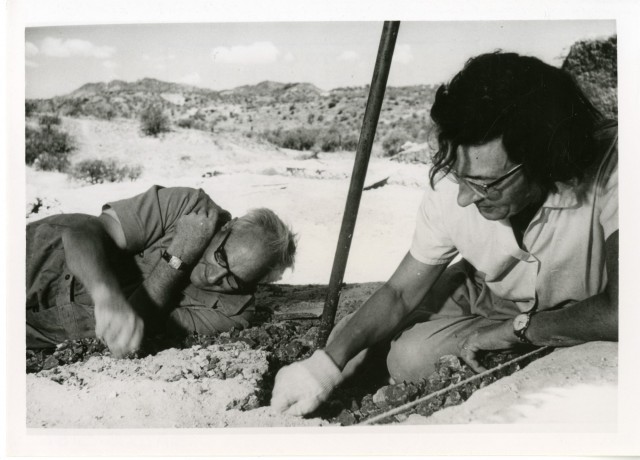Leakey Family
For two generations, the Leakey family of KENYA has contributed significantly to paleoanthropology—the study of early humans and their ancestors—in Africa. Fossils discovered by the Leakeys helped establish the continent as the site of human origins. Members of the family who participated in this research include Louis S.B. Leakey (1903–1972); his second wife, Mary Douglas Leakey (1913–1996); their son, Richard E.F. Leakey (born 1944); and Richard's wife, Meave Gillian Leakey (born 1942). The son of British missionaries stationed in Kenya, Louis Leakey was trained as an archaeologist and anthropologist. In 1936 he married Mary Douglas Nicol, an archaeologist. They began investigating the history of early humans in Africa, focusing their research on a place called Olduvai Gorge in TANZANIA. At Olduvai, Mary Leakey unearthed the oldest group of stone tools ever found.

In 1959 Mary Leakey discovered the skull of an early hominid, a member of the Hominidae family that includes modern humans and their ancestors. Known as Australopithecus boisei, it was 1.75 million years old. This find helped to expand scientists' understanding of human evolution. A few years later Louis Leakey found the first fossils of another hominid, Homo habilis. By writing and lecturing on these and similar discoveries, Louis Leakey aroused wide interest in paleoanthropology and inspired a generation of younger researchers. After Louis's death, Mary Leakey continued her work. At Laetoli, Tanzania, she discovered fossils of hominid footprints that were about 3.5 million years old.
Richard Leakey's major contribution to paleoanthropology was his discovery of a site called Koobi Fora in Kenya. It proved to be the world's richest known source of hominid remains. Together with Meave Leakey, he conducted a series of expeditions there from the late 1960s onward. In 1999 Meave Leakey and a team of researchers discovered the skull of a hominid called Kenyanthropus platyops in Kenya. About 3.5 million years old, it provided new information about the history of human ancestry. (See also Archaeology and Prehistory, Humans, Early.)